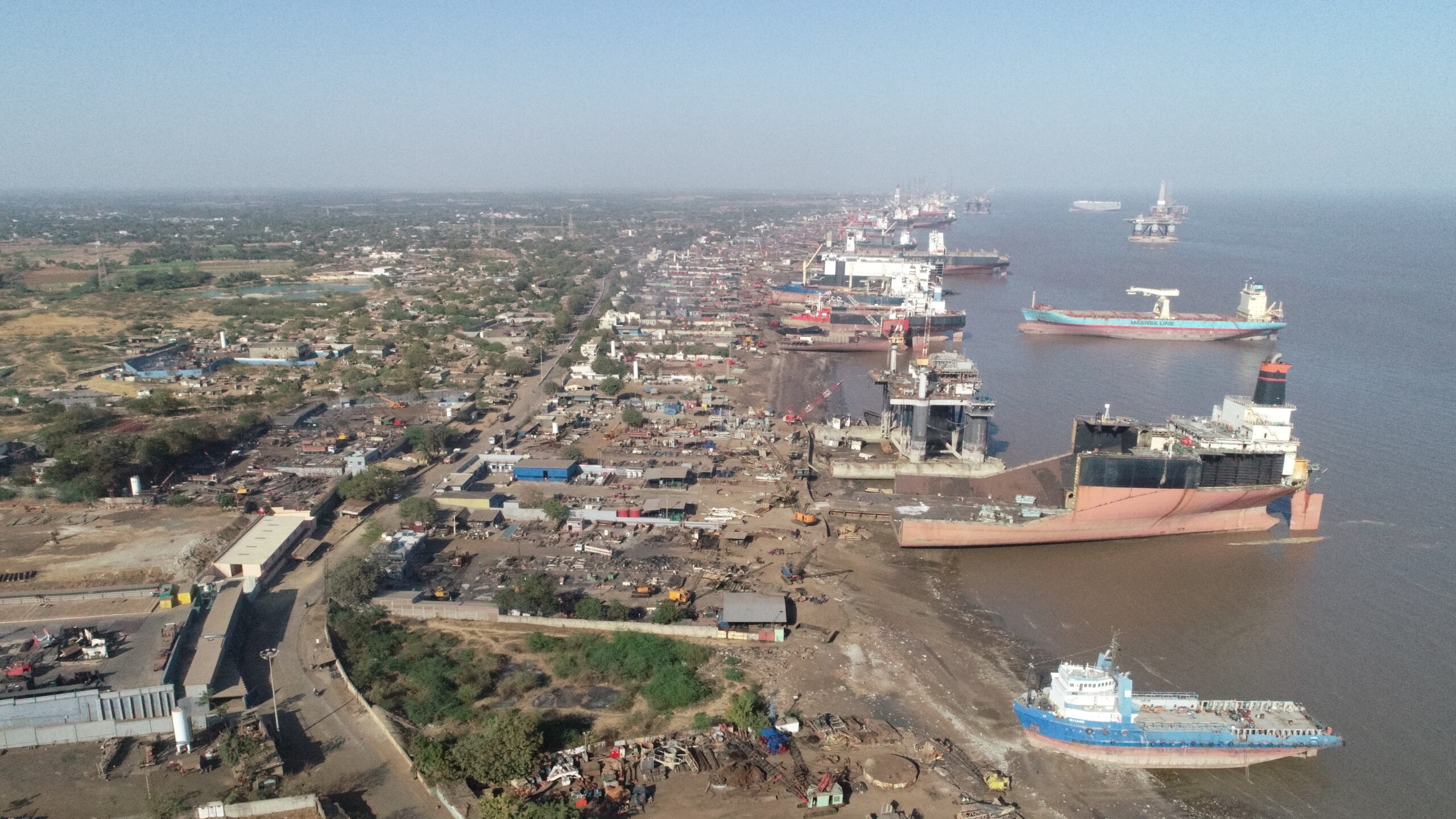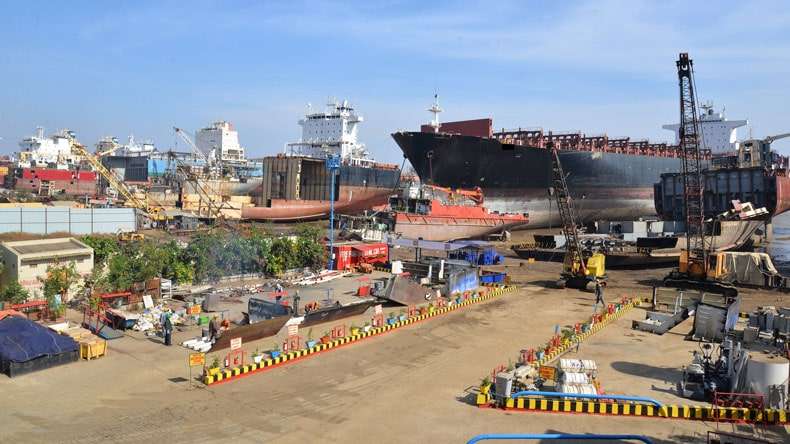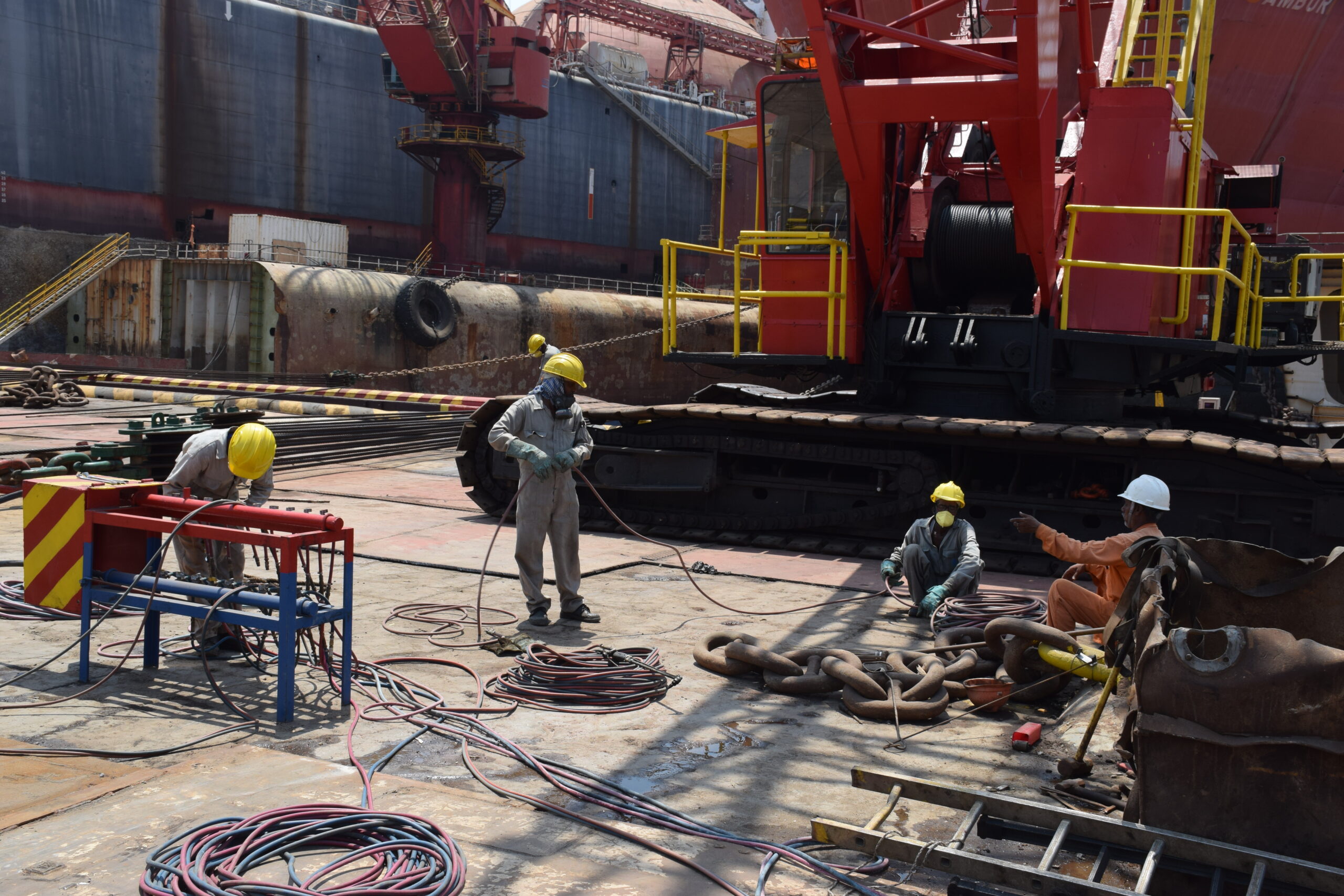Alang Ship Breaking: Setting the Safety Standard in South Asia
Alang, a coastal town in the Indian state of Gujarat, has long been a hub for shipbreaking activities. It stands out not only as one of the largest ship-breaking yards in the world but also as a leader in safety practices compared to other ship-breaking yards in South Asia. This article delves into the factors that make Alang’s shipbreaking industry safer, examining the initiatives, regulations, and practices that contribute to its superior safety standards.

The Importance of Safety in Ship-Breaking
Shipbreaking, the process of dismantling decommissioned ships for scrap recycling, is a hazardous occupation. Workers are exposed to risks such as toxic substances (like asbestos and heavy metals), fire, explosions, and physical injuries. Inadequate safety measures can lead to severe accidents, chronic health problems, and environmental damage. Therefore, implementing robust safety protocols is essential for the well-being of workers and the surrounding community.
Alang: A Historical Perspective
Alang’s rise as a ship-breaking hub began in the early 1980s. Its strategic location along the Gulf of Khambhat, with its high tidal range, made it an ideal site for grounding and dismantling large vessels. Over the decades, Alang has dismantled thousands of ships, making it a cornerstone of India’s steel recycling industry. However, the industry’s rapid growth also brought attention to safety and environmental concerns, prompting a series of reforms and improvements.
Regulatory Framework and Compliance
One of the key factors contributing to Alang’s safer ship-breaking practices is its adherence to stringent regulations. The Indian government, in collaboration with international bodies, has implemented comprehensive guidelines to ensure safety and environmental compliance.
The Ship Recycling Code (2013)
In 2013, India introduced the Ship Recycling Code, a set of regulations aimed at improving safety and environmental standards in the shipbreaking industry. The code mandates detailed safety measures, including:
Hazard Identification and Risk Assessment (HIRA):
Shipbreakers must conduct thorough assessments to identify potential hazards and implement measures to mitigate them.
Occupational Health and Safety Management:
Companies are required to establish and maintain occupational health and safety management systems, ensuring regular training and monitoring of workers.
Environmental Management:
The code emphasizes the proper handling and disposal of hazardous materials, reducing environmental contamination.
The Hong Kong International Convention for the Safe and Environmentally Sound Recycling of Ships (2009)
Although not yet fully ratified, India has shown a commitment to aligning its practices with the Hong Kong Convention. This international treaty, adopted by the International Maritime Organization (IMO), sets global standards for safe and environmentally sound ship recycling. India’s proactive stance in adopting these standards has further bolstered Alang’s reputation for safety.
Infrastructure and Technological Advancements
Alang’s ship-breaking yards have seen significant infrastructure and technological upgrades, enhancing safety measures across the board.
Modernization of Yards
Investments in modernizing the yards have included the construction of impermeable flooring to prevent soil contamination and the installation of advanced fire-fighting systems. Additionally, many yards have upgraded their equipment to include cranes, forklifts, and other machinery that reduce the reliance on manual labor, thereby minimizing the risk of physical injuries.
Personal Protective Equipment (PPE)
The use of personal protective equipment (PPE) has become mandatory in Alang. Workers are provided with helmets, gloves, safety boots, and respiratory masks to protect against injuries and exposure to hazardous substances. Regular inspections ensure compliance with PPE usage, significantly reducing the incidence of accidents and health issues.
Training and Capacity Building
Training programs have been instrumental in improving safety standards at Alang. Workers receive comprehensive training on safety protocols, emergency response, and the proper handling of hazardous materials. These programs are often conducted in collaboration with international organizations and NGOs, bringing global best practices to the local workforce.
Environmental Considerations
Environmental safety is intrinsically linked to worker safety in the shipbreaking industry. Alang has made notable strides in addressing environmental concerns, which, in turn, contribute to a safer working environment.
Hazardous Waste Management
Effective management of hazardous waste is crucial in ship breaking. Alang’s yards are equipped with facilities for the safe disposal of toxic substances, such as asbestos, lead, and polychlorinated biphenyls (PCBs). These facilities comply with international standards, preventing environmental contamination and protecting workers from exposure.
Air and Water Quality Monitoring
Regular monitoring of air and water quality around the shipbreaking yards ensures that pollution levels remain within safe limits. Efforts to control emissions from cutting and welding activities have resulted in improved air quality, reducing respiratory problems among workers.
Comparisons with Other South Asian Ship-Breaking Yards
When compared to other shipbreaking yards in South Asia, such as those in Bangladesh and Pakistan, Alang stands out for its safety measures and regulatory compliance.
Bangladesh
Bangladesh, particularly the Chittagong shipbreaking yard, has faced criticism for its poor safety record and environmental practices. The industry in Bangladesh has been plagued by frequent accidents, inadequate safety gear, and insufficient regulatory oversight. Although there have been efforts to improve safety standards, the progress has been slow, and challenges remain.
Pakistan
Similarly, Pakistan’s Gadani shipbreaking yard has struggled with safety and environmental issues. High-profile accidents, such as the 2016 oil tanker explosion, highlighted the urgent need for reforms. While there have been some initiatives to enhance safety, Pakistan’s shipbreaking industry still lags behind Alang in terms of infrastructure, regulatory compliance, and worker training.
The Role of International Collaboration
International collaboration has played a vital role in elevating Alang’s safety standards. Partnerships with organizations like the International Labour Organization (ILO), the IMO, and various NGOs have facilitated knowledge transfer, technical assistance, and funding for safety initiatives. These collaborations have helped Alang adopt global best practices, positioning it as a leader in safe shipbreaking.
Challenges and the Way Forward
Despite its achievements, Alang faces ongoing challenges in maintaining and further improving safety standards. Continuous efforts are needed to address issues such as worker health monitoring, enforcement of regulations, and adaptation to evolving international standards.
Continuous Monitoring and Improvement
Regular audits and inspections by regulatory authorities are essential to ensure compliance with safety protocols. Continuous monitoring helps identify gaps and areas for improvement, fostering a culture of safety and accountability.
Community Engagement
Engaging the local community and workers in safety initiatives is crucial. Awareness programs, health camps, and community-based monitoring can enhance the overall safety culture and ensure that the benefits of safety measures are widely recognized and embraced.
Future Innovations
Embracing technological innovations will be key to the future of safe shipbreaking in Alang. Advances in automation, robotics, and artificial intelligence can further reduce manual labour, minimizing risks and enhancing efficiency.
Conclusion
Alang’s shipbreaking industry has made remarkable strides in establishing itself as a safer alternative to other South Asian shipbreaking yards. Through stringent regulations, infrastructure upgrades, worker training, and international collaboration, Alang has set a benchmark for safety and environmental standards. While challenges remain, the ongoing commitment to improvement and innovation positions Alang as a model for safe and sustainable shipbreaking in the region.
Author: shipping inbox
shipping and maritime related web portal








